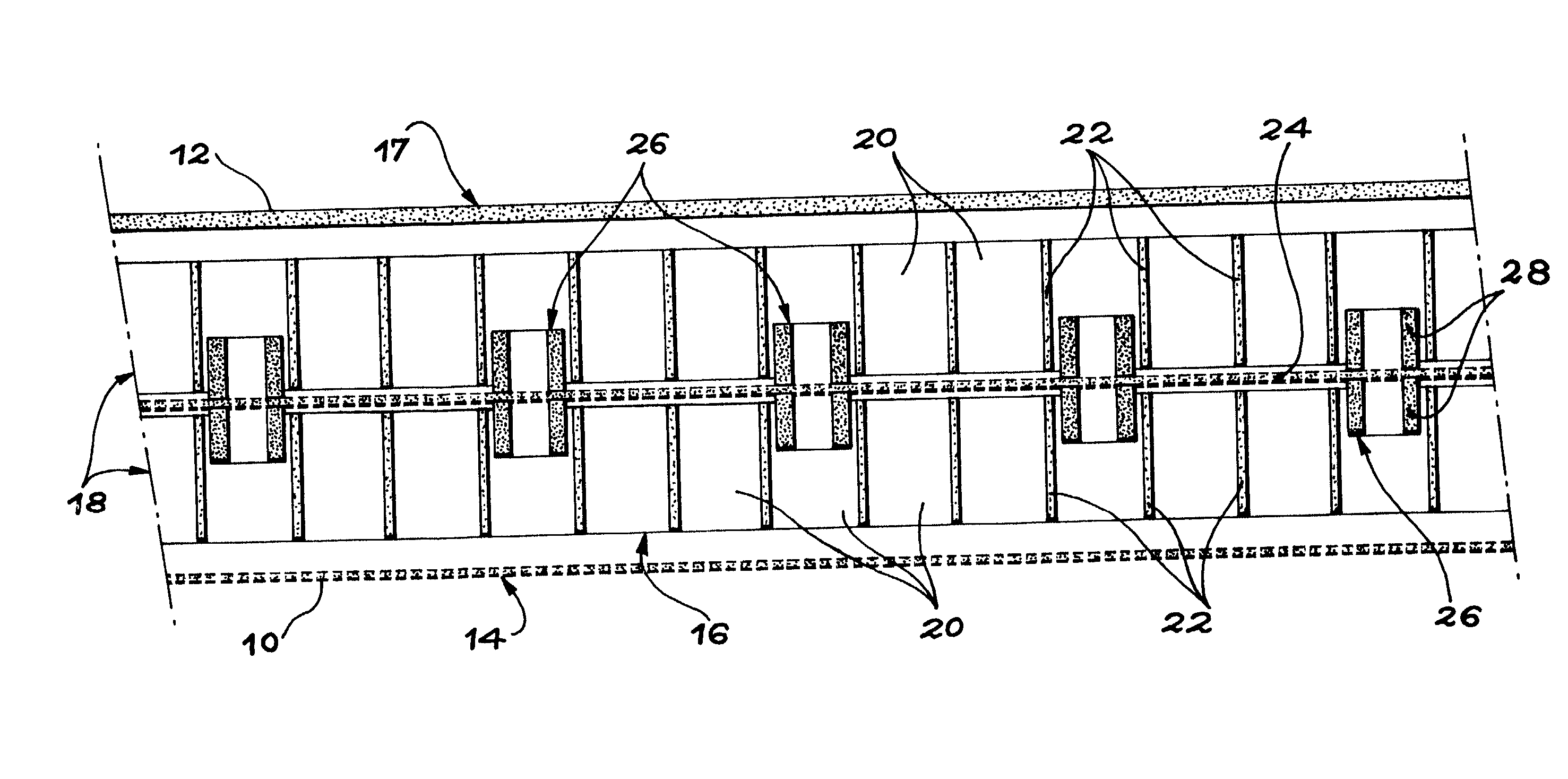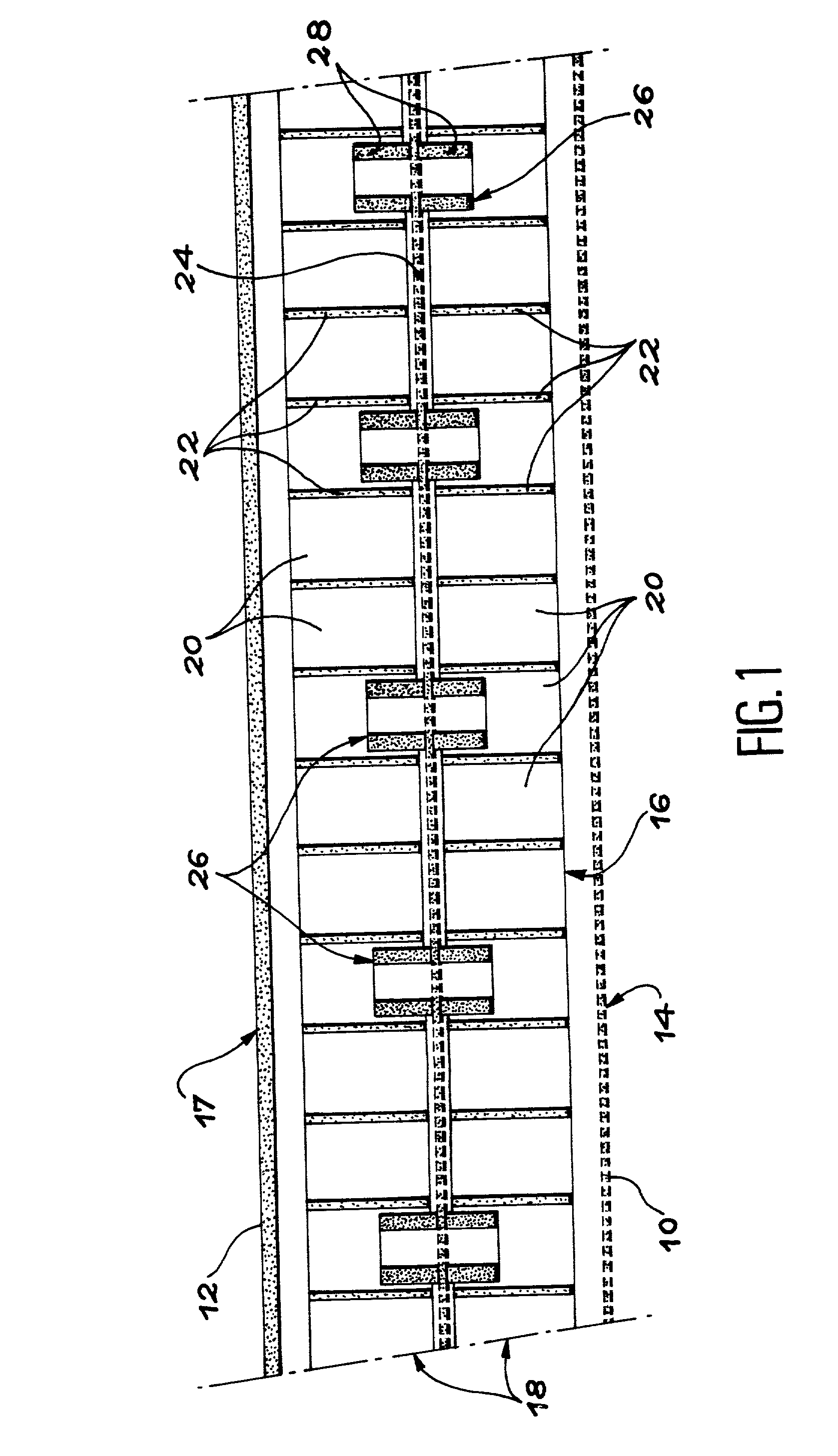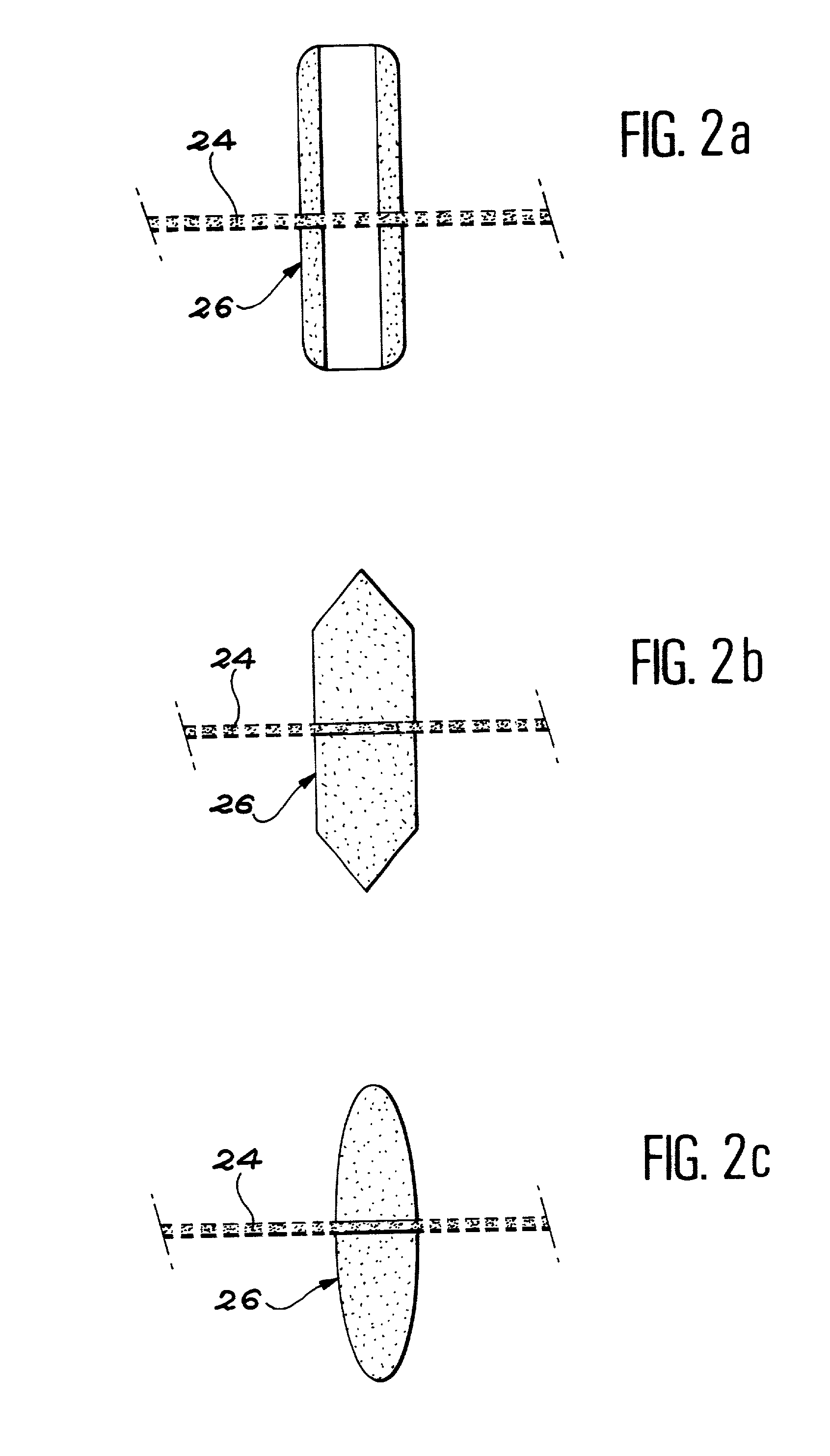Sandwich acoustic panel
- Summary
- Abstract
- Description
- Claims
- Application Information
AI Technical Summary
Benefits of technology
Problems solved by technology
Method used
Image
Examples
Embodiment Construction
[0035] As shown diagrammatically in FIG. 1, a sandwich acoustic panel conform with the invention is composed of a stack of several constituents fixed to each other. To facilitate understanding, these constituents are shown slightly separated from each other. In practice, they are in close contact over the entire surface of the panel.
[0036] The acoustic panel according to the invention may be plane, as shown as an example. However, it may also be in any other shape, and particularly a curved shape as is the case in which it is integrated in the pod or engine casing of a turbojet.
[0037] The structure of the panel will now be described starting from the outside face 10 of the panel called the "front face", and working in order towards its inside face 12, called the "back face". In the figure, the front face 10 and the back face 12 are facing the bottom and top respectively.
[0038] Thus, starting from the front face 10, the acoustic panel according to the invention comprises a resistive ...
PUM
 Login to View More
Login to View More Abstract
Description
Claims
Application Information
 Login to View More
Login to View More - R&D
- Intellectual Property
- Life Sciences
- Materials
- Tech Scout
- Unparalleled Data Quality
- Higher Quality Content
- 60% Fewer Hallucinations
Browse by: Latest US Patents, China's latest patents, Technical Efficacy Thesaurus, Application Domain, Technology Topic, Popular Technical Reports.
© 2025 PatSnap. All rights reserved.Legal|Privacy policy|Modern Slavery Act Transparency Statement|Sitemap|About US| Contact US: help@patsnap.com



